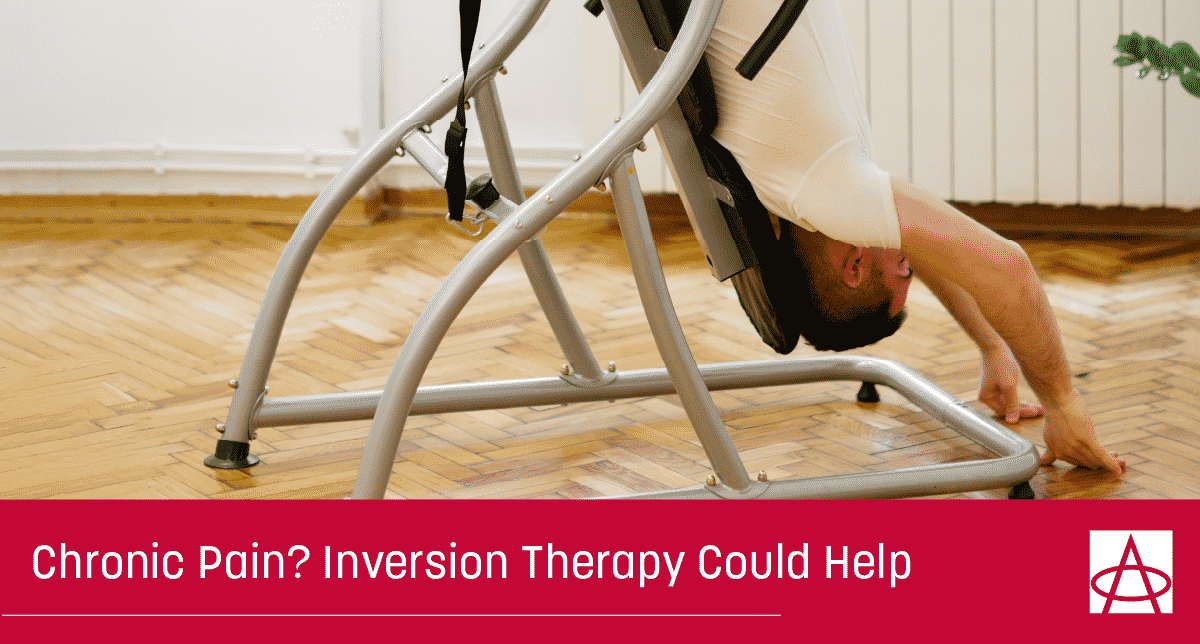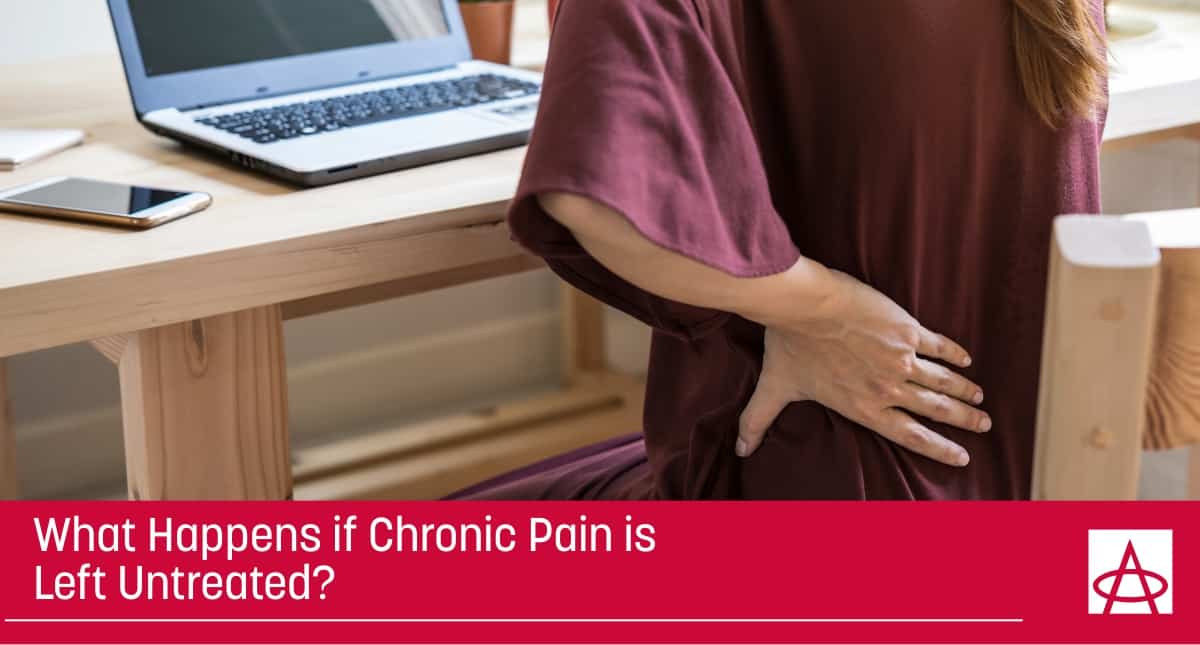
Chronic Pain? Inversion Therapy Could Help
By: Dr. Victor Taylor
Inversion therapy is a relatively inexpensive way to apply traction to the spine and helps to manage chronic spinal and radicular pain.
This type of treatment can aid in the treatment of lumbar, thoracic, and even neck pain. A significant component of chronic pain is related to poor biomechanics, or loss of ideal movement. Inversion therapy can aid one important component of poor spinal biomechanics.
What does that mean?
Biomechanics simply refers to how our bodies move. How we walk, run, lift, sit etc. When biomechanics are off because of a problem in a joint, with a muscle or tendon or ligament, that part will not move correctly.
Your muscles try to overcompensate leading to altered biomechanics, which leads to a cycle of micro-trauma, muscle spasms, inflammation and chronic pain, and, eventually permanent changes including arthritis and degeneration of the disks of the spine among other problems.
Inversion therapy can help alleviate several components of poor biomechanics.
Inversion therapy involves putting yourself into a specially constructed tilt table, clipping your feet in at the ankles, and gradually turning upside-down.
Hanging upside-down opens up the facet joints – little joints in the back of the spine.When those joints become stuck together, there is no lubrication, and they cannot move. Inversion therapy separates those joint surfaces and allows the synovial fluid to get back in-between the joints, akin to popping your knuckles.
This lack of movement is detrimental, causing the muscles to tighten up, which can further increase the problem of chronic pain. Opening those joints up by creating traction can relieve chronic pain. Separating those surfaces allows the synovial fluid to get back in, helping to relax the muscles.
Inversion therapy relieves pressure on the disk.
Disks are not particularly elastic, therefore hanging upside down during inversion therapy doesn’t elongate or enlarge the disc. However, over time – and the key with inversion therapy is consistency over a long period – inversion can gradually improve the spinal mechanics. It can even enhance the mobility in the disk.
There’s at least one published study that shows a single level restoration of the architecture of a bulging disk.
Related: What is Chronic Pain Syndrome?
What is the Popping Noise You Hear When Hanging Upside Down?
The thinking is, and it’s not entirely known, similar to popping your knuckles. When you open the joint surfaces, it creates a brief cavity, and then as fluid rushes in to fill that vacuum, that’s the popping noise.
It’s an interesting phenomenon! The Pistol Shrimp uses this to stun its prey by popping a joint in its claw. It pops it so hard that it creates a shockwave in the water – enough to stun a tiny fish! Check out the video.
The fish has to be close to the shrimp for it to work. The shrimp uses the cavitation of the joint opening up, just like if you pick up a glass that’s wet off of a coaster or a slick surface – it sticks. When you unstick it, a brief vacuum is created before air can flow in the area.
It’s the same in your joints. When those joint surfaces open up, a brief vacuum is created, and the fluid rushes in, probably resulting in the popping noise you hear.
Inversion Therapy Risks
You need to be careful with inversion therapy, mainly if you are a patient with significant radicular symptoms. These are symptoms that run into your arms or legs.
Inversion therapy or traction can exacerbate that. If you’re having significant symptoms, it’s essential to see a specialist physician, like our doctors at Advanced Pain Care, or a neurosurgeon or chiropractor – somebody who is well-versed in this area and can use imaging to make sure it’s safe.
Do you remember those little paper handcuffs that you got at the fair as a kid where you put your fingers in them, and then you tried to pull them apart, and they tightened down? If you have a severe herniation or severe stenosis and introduce traction when the area is too narrow, you can tighten that space down, causing paralysis. That would be very rare, but you must know exactly what is going on before you start inversion therapy.
Other risks include dizziness, as some people get very nauseous when they hang upside down.
Usually, that goes away after four to six weeks of doing consistent inversion therapy. You can work around it by doing very brief sessions and not going very far past horizontal – start at 10 degrees past horizontal.
Warning: Don’t Invert Alone
We tell our patients not to do inversion therapy at home alone. Once you get it balanced out, it’s easy to get up, but until you have it balanced, you could get stuck and be unable to get back up again. While it probably wouldn’t kill you, I don’t think you would be pleased.
Inversion Devices
All inversion devices work on the same principle: traction.
Inversion-type therapy has been used since the days of the Romans. You can see old drawings of people strapped with leather into traction machines or hanging on a wall. These are not depicting torture!
Traction has a long history in the United States. In the middle of the last century, if someone injured their back, they might have put them in a body cast or in traction in a bed for some time.
I recommend the Teeter’s Hangups to patients because that’s what I have and love. I ordered it when I was a resident because I was having a lot of back pain. I was shocked at how effective it was. It’s a well-made, heavy-duty device. I admit I don’t use it as consistently as I should, but anytime my back flares-up, I’ll use it for several days. Ideally, you treat it like brushing your teeth and do it every day. I would say 90% of our patients find it useful when they do it regularly.
I’ve had my inversion table for 15 years. I would be careful not to get a cheap brand. You’re going to be hanging upside down, and if you didn’t get your feet strapped correctly, you could be severely injured or even killed if you fell directly on your head.
Inversion Therapy Can be a Powerful Aid in Treatment
I’ve had patients who didn’t need to do anything to help their back pain other than getting an inversion table.
For most people who get to us Inversion alone is not enough. Interventions such as Rhizotomy, epidural lysis, epidural steroids, spinal cord stimulation, or even surgery may be needed to get their pain under control. Even for patients who do need interventions, rehabilitation can improve outcomes and help the relief last longer or become permanent.
The vast majority of our patients that are able to get excellent results with interventional techniques combined with rehabilitation including, for many, inversion therapy.
What You Can Do at Home
Before beginning any home rehab program, and particularly inversion therapy, check with a qualified physician, physical therapist or chiropractor.
We recommend inversion therapy in conjunction with an exercise that strengthens and stabilizes the spine. For example, air squats, neural-flossing exercises, and inversion therapy.
Air squats are precisely what they sound like: you do a squat with the correct form. We encourage people to do 10 them four times a day in conjunction with inversion therapy. Inversion therapy and air squats are a powerful combination. People with bad knees or balance problems may not be able to do air squats. Everyone should take proper precautions- holding on to a secure bar or having a well place chair to avoid injury
Neural flossing is a simple exercise where you pull your knees into your chest and then straighten your legs up towards the ceiling.
In my experience, the best treatment of chronic spinal pain is a three-pronged approach: rehabilitation, interventional techniques, and medications. Inversion therapy is an important tool in the majority of properly selected patients.
While inversion therapy is not a cure all, and most of our patients need interventional procedures and medications to maximally control their pain, it is a useful adjunct to treatment.
We’ve seen an 80-85% success rate in biomedical spine pain and other chronic pain using our three-pronged approach. Even patients who have had surgery and still have pain are likely to get good results with this approach.If you can improve the biomechanics, you can reverse some of the degenerative changes – not all changes, but enough to make a difference
Even people who failed to improve in the past have hope today. Techniques are better and technical advances in Spinal Cord Stimulation are revolutionizing the treatment of chronic pain.






